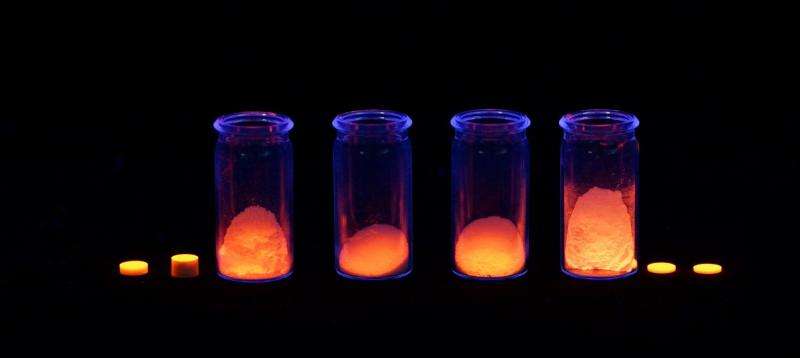New transparent luminous pigments provide high temperature stable protection against counterfeiting

Research scientists at INM - Leibniz-Institute for New Materials have developed luminous particles that can also withstand high temperatures. When activated by UV light or x-rays, they glow orange red.
Everyone knows the small UV lamps at cash desks in supermarkets. They are used to verify whether "big banknotes" are genuine. To do so, colorful snippets light up inside the note. The luminous particles which cause this consist of organic compounds. They are not suitable for high temperatures because, in such cases, the luminous particles disintegrate. They therefore cannot be used to provide counterfeiting protection for objects that are subjected to high temperatures. Now research scientists at INM – Leibniz-Institute for New Materials have developed luminous particles that can also withstand high temperatures. When activated by UV light or x-rays, they glow orange red.
The researchers will be presenting their results from 25 to 29 April 2016 in Hall 2 at the stand B46 of the Hannover Messe in the context of the leading trade fair for R & D and Technology Transfer.
Engine components in cars, high-grade machinery for the industrial sector or high-value appliances in private households – some of these everyday objects are subjected to high temperatures when used. Original automotive components and the corresponding spare parts are a seal of quality for manufacturers and consumers: For the driver, original components mean that the risk of accident is lower. Originality of the parts can only be proven, if the counterfeit protection also withstands high temperatures and can be read easily. A missing counterfeit protection on forged spare parts guards the original manufacturer from claims for compensation.
"For our luminous pigments, we can achieve such temperature stability up to 600 degrees Celsius," says INM's Peter William de Oliveira. The developers at INM have succeeded in doing so by using a manufacturing method applying wet chemical processes. "The particles not only fulfill the demands of high temperatures but through the addition of suitable solvents, they can also be converted into printable paste. Consequently, they can easily be printed onto many materials using screen printing, for example," the Head of the InnovationCenter at INM explains further.
Using luminous pigments made of yttrium oxide or gadolinium oxide, printed designs are created in white or transparent that glow orange red in UV light or x-rays. With different manufacturing conditions, particles of between seven and approximately 600 nanometers can be achieved thus alloying the researchers to take different requirements and processes in industry into account.
Provided by Leibniz Institute for New Materials



















